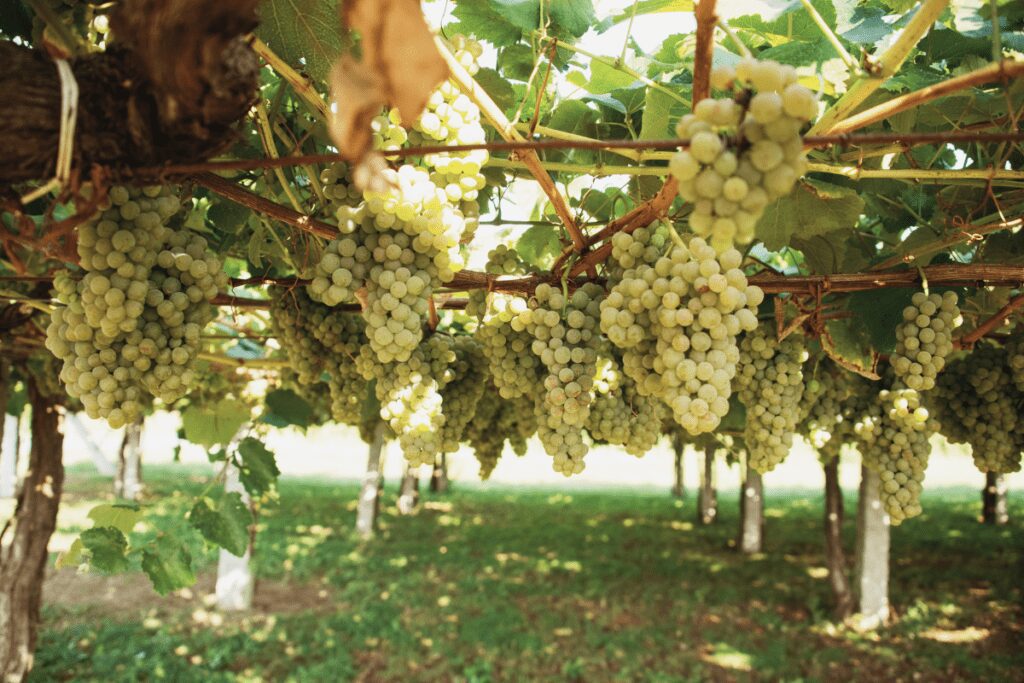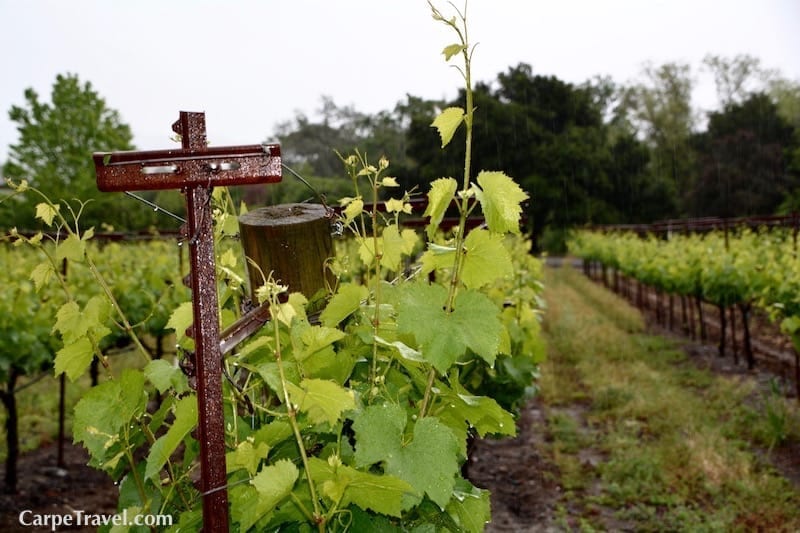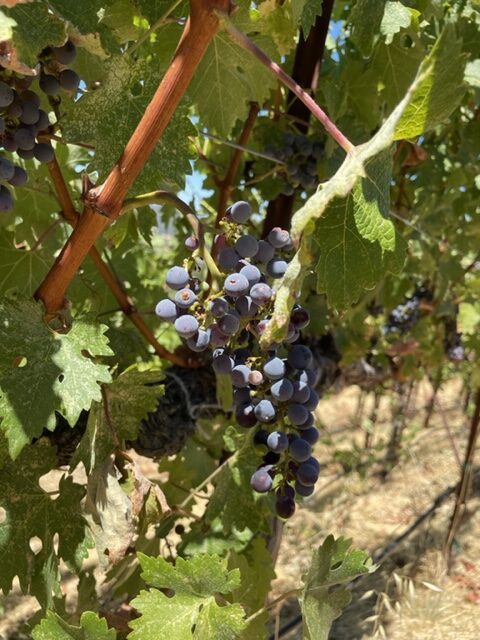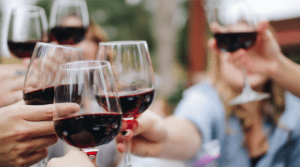Discover Connecticut
Wine Country
The Ultimate Connecticut Wine Vacation Guide. Where to Sip, Stay & Things to Do
Our guide to sipping and exploring the Connecticut wine regions is designed to help you understand the regions, the wines and the dynamic people shaping the valley. You will find valuable information on where to sip, stay and things to do so you can curate your own grape escape. (If you need help with planning it, let us know!)
WHERE IS CONNECTICUT WINE COUNTRY?
Connecticut is a small state. It’s difficult to find two locations in Connecticut that take more than a three-hour straight shot drive. Fortunately, Connecticut has a good road system, and driving from winery to winery within one of three AVAs is easy to do.
BEST TIMES TO VISIT
The best time to visit Connecticut’s vineyards depends on what you want out of your visit, but many wine lovers time their visits to see the state’s famous fall foliage at the same time—which is typically at its height of beauty between October and November.
GETTING THERE
If flying into Connecticut, both the Bradley International Airport, the state’s main airport near Hartford is convenient to the wineries in the Eastern Connecticut Highlands and Western Connecticut Highlands AVA. The East Coast’s i95 which runs from Miami to Maine runs through much of the Southeastern New England AVA but starts in the lower left corner of the state and has offshoots that easily take drivers to other parts of the state.
TOP GRAPE VARIETIES IN CONNECTICUT
White Wine Grapes
- Cayuga White
- Chardonnay
- Pinot Gris
- Seyval Blanc
- Riesling
- Vidal Blanc
RED Wine Grapes
- Baco Noir
- Cabernet Franc
- Corot Noir
- Chambourcin
- St. Croix
HISTORY OF CONNECTICUT WINE COUNTRY
The word “emerging,” a term often used for wine regions that are becoming established or just beginning to become widely known, is commonly used in the U.S. to describe most of the regions that aren’t on the West Coast. There’s no rule for when a wine region flips over from emerging to emerged, but one region squarely in the emerging column is Connecticut.
The modern wine scene is slowly and steadily growing. But Connecticut’s winemaking history began long before the modern wine scene materialized. When Connecticut’s seventeenth-century English Puritan colonizers came to the region, they found abundant native red and white grapes. They fermented those grapes and drank wine regularly from the earliest days of making the land their home.
By the mid-1800s, winemaking was an important part of farm life that a Grape Gowers and Vintners’ Convention was held in 1858 and a Vintners’ Association formed from that convention. Vintners found success with grapes such as Concord, Hartford Prolific, Ives, and Clinton. In the late 1800s and early 1900s, farmers found that growing grapes and producing wine were profitable endeavors. Those profits dried up during Prohibition, and after the alcohol producing ban lifted, Connecticut’s laws made it next to impossible to legally sell wine until the Farm Wine Act of 1978 created an easier path for winemakers to sell to the public. Since then, the small state of Connecticut’s wine industry has been emerging.
The first commercial winery since Prohibition was Litchfield’s Haight-Brown Vineyard. It was the first to grow vinifera commercially—Chardonnay and Riesling—and led the way for other commercial wineries to create wine from native grapes, hybrids, vinifera, and fruits other than grapes. It is, like many of its neighboring states, in an experimental period, discovering which grapes grow well in Connecticut’s terroirs.
It’s been 45 years since Connecticut enacted the Farm Wine Act, and the state now has 47 Farm Wineries, according to Connecticut Grown. There are three recognized AVAs in the Constitution State, and a 27-member Wine Trail (that spans the entire small state).

FAST FACTS...
- New England has just four AVAs and three of them are in Connecticut. The other is in Massachusetts, the Martha’s Vineyard AVA, but there are no operating wineries in the Martha’s Vineyard AVA at the moment.
- Wines made in Connecticut must contain at least 75% Connecticut grapes to be labeled Connecticut. To be labeled with a specific Connecticut AVA, 85% of the grapes in the wine must come from the AVA.
- Fruit wines are increasingly popular in Connecticut. The state makes well-received wines out of raspberries, blackberries, black currants, rhubarb, peaches, pears, blueberries, apples, and more.
- Not much of Connecticut’s wine makes it out of the state, but if you visit and love a wine, there’s a good chance you can get it shipped to your home, depending on your state’s laws.
- Connecticut has a CT Wine Passport app available for both iOS and Android platforms that has information about the wineries and also gives winery visitors the chance to win prizes in several categories.
TERROIR
Connecticut - one of the smaller states in the United States - is home to THREE American Viticultural Areas (AVAs) and 45 licensed wineries.
Small but mighty in regions that are great for grapes, each of Connecticut’s eight counties has at least one winery but if you want to hit a concentration of wineries, head to Litchfield County, Hartford County, New Haven County, or New London County. It’s within those counties where the majority of the state’s three AVAs lie.
The AVAs in Connecticut
Eastern Connecticut Highlands AVA
Established in 2019, the state’s newest AVA covers about 797,440 acres in parts of Hartford, Middlesex, New Haven, New London, Tolland, and Windham counties. The cool region with rolling hills and soils of glacial till has a growing season from mid-May through mid-September.
Western Connecticut Highlands AVA
Established in 1988, the AVA covers 1,004,550 acres and includes all of Litchfield County and parts of Fairfield, New Haven, and Hartford Counties. The cool region with rolling hills, small mountains, and soils of glacial schist and granite has a growing season from mid-May through mid-September.
Southeastern New England AVA
Shared with Rhode Island and Massachusetts, the AVA was established in 1984, and in Connecticut, it runs through parts of New Haven, New London, and Middlesex counties. In total, the AVA covers 1,875,200 acres and is surrounded by the Long Island Sound, Cape Cod Bay, and Massachusetts Bay, creating a moderate region. The soils closest to the waters are sandy and become granite, flint, shale, and basalt inland.
WHERE TO SIP
There are too many wineries in Connecticut to pick just one. These eight Connecticut wineries represent some of the best of the best and are scattered throughout the state’s three AVAs. They are a fabulous start for exploring the vineyards in Connecticut.
Aquila’s Nest Vineyards was voted 2023’s Best Winery in the state by Connecticut Magazine. Visitors can sip wine (each named after a woman from ancient Mediterranean history and mythology) in the tasting room or outdoors with no reservation, or reserve several types of special seating, including a Fairy Gazebo for up to 9 guests can be reserved for $80 for two hours. The winery hosts live music and food trucks most weekends.
Hopkins Vineyard in Warren in the Western Connecticut Highland AVA is on land owned by the Hopkins family for over 235 years. While enjoying the views from an old barn turned tasting room. visitors can sip on dry wines Cabernet Franc and Riesling, semi-dry wines from grapes such as Cayuga White and Corot Noir, or the the winery’s brut sparkling wine made in the Champagne method.
Stonington Vineyards is open 7 days a week, if you head to Stonington in the town of the same name make sure to try its Barrel Aged Chardonnay. The winery is also known for its summer events such as the Friday night Summer Concert Series and its end-of-summer Harvest Food & Wine Festival.
Jonathan Edwards Winery allows visitors to enjoy wines made from grapes from both the West Coast and the East Coast. The North Stonington winery in the Southern New England AVA crafts wines from grapes from California (Primitivo, Zinfandel) and its own estate vineyards in Connecticut (Cabernet Franc, Chardonnay). Music is big at the winery, too, and during the warmer months with some acts that go beyond the local acoustic duos often found at wineries.
Jones Family Farm in Shelton produces over 20 wines from estate and Connecticut grapes and makes sought-after fruit wines, too. The winery has incredible views from its converted dairy barn tasting room and the winery offers a selection of light fare including cheese and charcuterie plates.
Preston Ridge Vineyard is home to breathtaking views of the Connecticut countryside for over 20 miles. This Connecticut winery is a popular wedding venue, crafts quality wines from grapes that grow well in its Connecticut soils, hosts live music and food trucks and is open Friday through Sunday.
Saltwater Farm Vineyard is in Stonington and makes award winning wines on the Connecticut shoreline. Its vineyards are situated on a former airfield and the winery’s building is in an old airplane hanger. Situated on the Long Island Sound, it’s directly across from Long Island’s North Fork and shares a similar terroir and the ability to craft excellent Sauvignon Blanc, Cabernet Franc, and Merlot.
Sharpe Hill Vineyard has more than 350 awards from International Wine Competitions. That said, Sharpe Hill in Pomfret is worth visiting. It’s stunning with an old New England kind of feel, but its hours are limited, Friday – Sunday, 11 a.m. to 3 p.m. If you’re curious about the St. Croix grape that grows so well in Connecticut, Shape Hill is a good place to discover what it can do. The winery makes a dry red and a Port-style wine from the grape.
Planning Your CONNECTICUT Wine Vacation
CONNECTICUT WINE TASTING ITINERARIES
If you’re coming to Connecticut for a wine weekend, any one of the three AVAs would make enjoyable destinations, but one of them also includes the charming village of Mystic—located along both sides of the Mystic River (and also of the famed movie centered around pizza). There’s plenty to do in the region so you can get your wine on, plus savor the bounty the Southern New England AVA has to offer. So let's start there.
WHERE TO STAY IN CONNECTICUT WINE COUNTRY
Head to your hotel before going out for dinner. The historic boutique Whaler’s Inn in the heart of Mystic has 47 rooms over five buildings. If you’re simply looking for a place to sleep and shower, the Hampton Inn & Suites Mystic or the Holiday Inn Express Mystic are great options, and they both offer free breakfasts.

GETTING AROUND
Once you’re in Connecticut, if you’d rather forgo having a designated driver, Gateway Limousine is well familiar with the state’s vineyards and can safely get your small or large group to and from the wineries on the Connecticut Wine Trail.

-
Greenwich Wine + Food Festival
The multi-day event features a Master Chef Dinner on Friday evening, and all-day Saturday festival featuring tastings, demonstrations by celebrity and local talent, celebrity chef book signings, Burger Battle, Top Bartender’s Showdown and a live musical performance. The food and wine festival benefits local and national charitable organizations, with past beneficiaries including Paul Newman’s Hole in the Wall Gang Camp, James Beard Foundation, Greenwich Breast Cancer Alliance and more.
- Wine Festivals in Every State Not to Miss
BEYOND THE VINES
The thee distinct wine regions in Connecticut there so many fun activities, so if you’re looking for things to do besides sipping in the Connecticut wineries, we have A LOT OF IDEAS for things to do besides wine tasting.
Mystic Seaport Museum – The leading maritime museum in the U.S. is in Mystic. Its 19 acres right on the Mystic River have something for the whole family with exhibit halls, a working shipyard, and a recreated New England coastal village.
Essex Steam Train & Riverboat – With various excursions offered, the 2 1/2 hour train and riverboat option starts at the historic 1892 Essex Station with a 12-mile round trip through the Connecticut River Valley, allowing guests to take in all the beauty of the valley.
Lake Compounce Amusement & Water Park – Connecticut boasts the oldest continuously operating amusement park in the United States, and it’s not too far from the wineries in Hartford County. With amusement rides, water attractions, and special rides for the kiddies, it’s a great family stop in between winery visits.
Berkshire Balloons – Take an early morning balloon ride over Farmington Valley or Litchfield Hills. Flights leave at 6 a.m. in spring and summer and 7 a.m. in fall and winter, giving you the rest of the day to visit nearby wineries.
Sleeping Giant State Park – If you need a day off from sipping Connecticut’s quality wines, head to Sleeping Giant State Park to hike its trails that range from an easy, 1.5-mile hike to a tower with a 360-degree view to a difficult, 5.1-mile hike with beautiful views along the way.
Greenwich – While visiting, make your home base the coastal town Greenwich, with a walkable downtown with shopping, dining, and art. From there, you can easily visit the wineries in the Western Connecticut Highland AVA and also hit some in the Southern New England AVA.
Mohawk Mountain Ski Area – Visiting wineries in the winter also gives you the opportunity to ski or snow tube. Mohawk Mountain offers both and is conveniently located to the wineries in the Western Connecticut Highland AVA.
Beardsley Zoo – If you’re on a family vacation and visiting wineries, it’s always a great idea to plan something just for the kids. It’s their vacation, too. The Beardsley Zoo is over 100 years old and is the state’s only zoo and has monkeys, tigers, leopards, and plenty of snakes.
Sip in More of Connecticut Wine Country
Robin Shreeves is a drinks journalist and lifestyle features writer. Her wine writing has appeared in dozens of print and online publications including Wine Enthusiast, VinePair, Courier Post, Spirited magazine, Edible Philly, Edible Jersey, USA Today, and Drink Philly. A champion of wines from the mid-Atlantic region, she co-hosts an East Coast Wine chat on the Clubhouse app Sunday nights at 7pm. Her writer’s website Wine & Wonder has a weekly roundup of East Coast Wine News posted each Monday.


